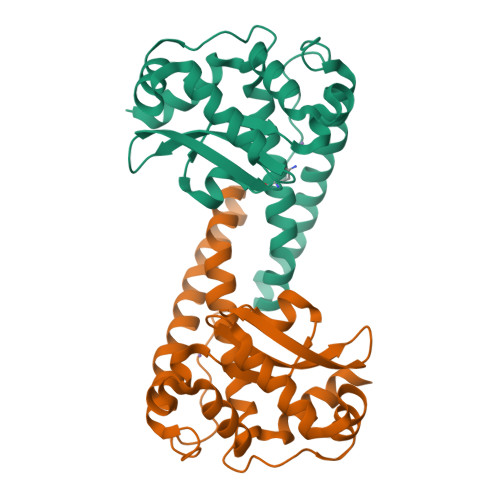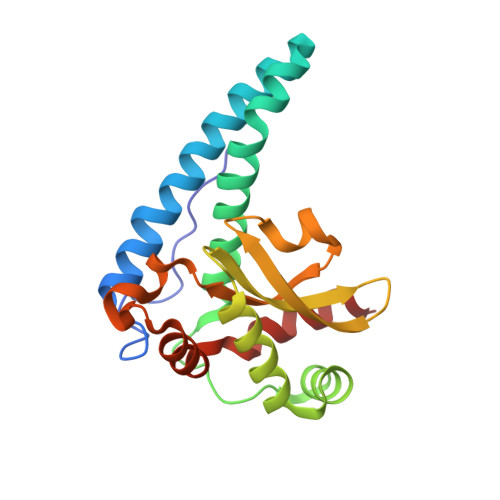Direct detection of coupled proton and electron transfers in human manganese superoxide dismutase.
Azadmanesh, J., Lutz, W.E., Coates, L., Weiss, K.L., Borgstahl, G.E.O.(2021) Nat Commun 12: 2079-2079
- PubMed: 33824320
- DOI: https://doi.org/10.1038/s41467-021-22290-1
- Primary Citation of Related Structures:
7KKS, 7KKU, 7KKW, 7KLB - PubMed Abstract:
Human manganese superoxide dismutase is a critical oxidoreductase found in the mitochondrial matrix. Concerted proton and electron transfers are used by the enzyme to rid the mitochondria of O 2 •- . The mechanisms of concerted transfer enzymes are typically unknown due to the difficulties in detecting the protonation states of specific residues and solvent molecules at particular redox states. Here, neutron diffraction of two redox-controlled manganese superoxide dismutase crystals reveal the all-atom structures of Mn 3+ and Mn 2+ enzyme forms. The structures deliver direct data on protonation changes between oxidation states of the metal. Observations include glutamine deprotonation, the involvement of tyrosine and histidine with altered pK a s, and four unusual strong-short hydrogen bonds, including a low barrier hydrogen bond. We report a concerted proton and electron transfer mechanism for human manganese superoxide dismutase from the direct visualization of active site protons in Mn 3+ and Mn 2+ redox states.
Organizational Affiliation:
Department of Biochemistry and Molecular Biology, 985870 Nebraska Medical Center, Omaha, NE, USA.


















